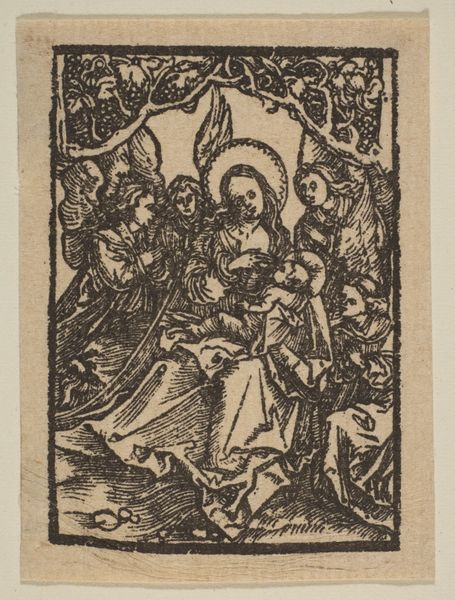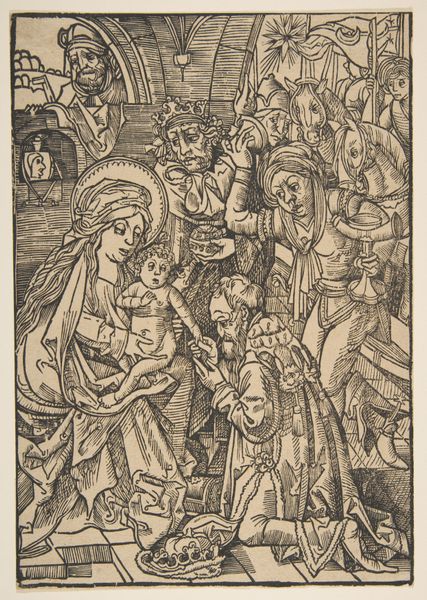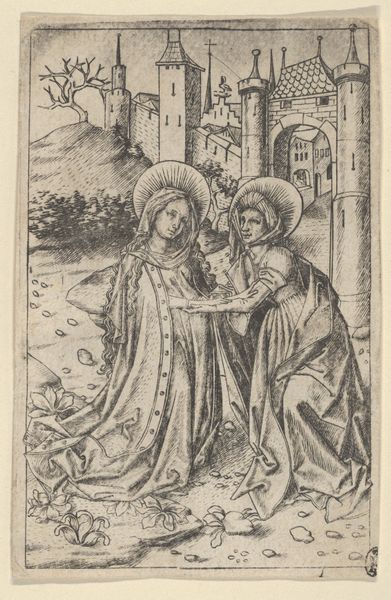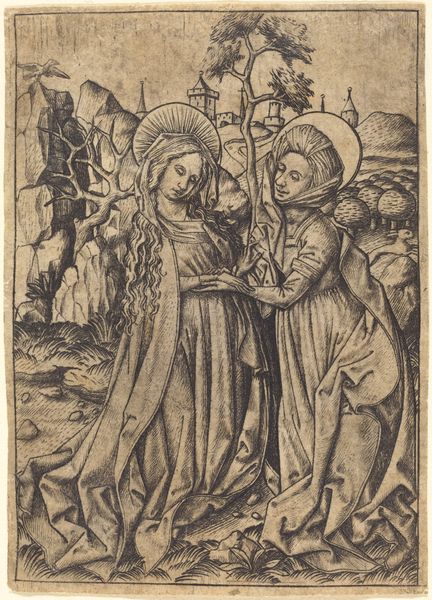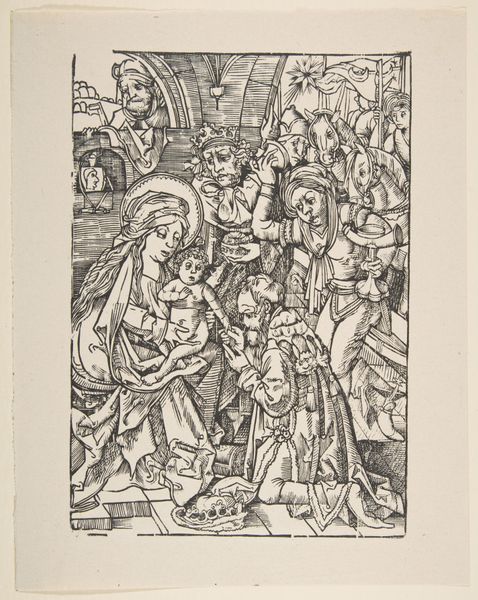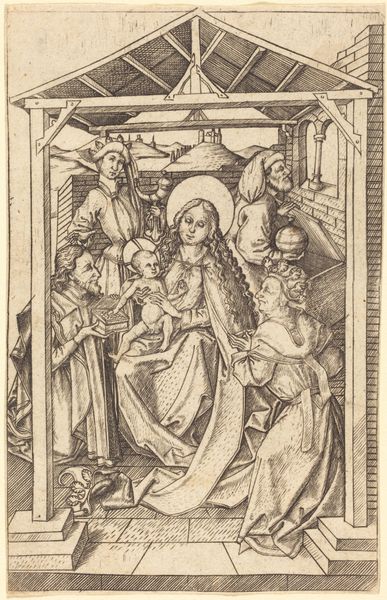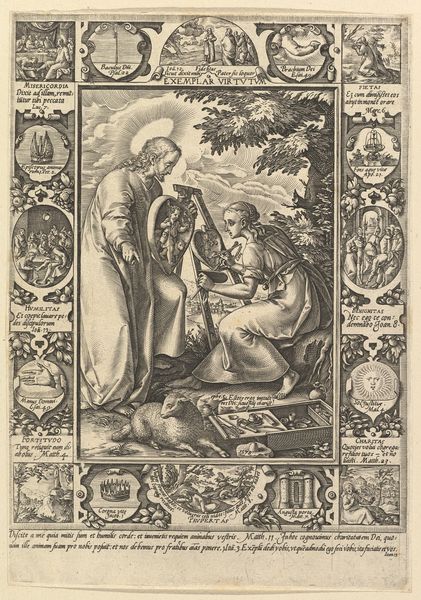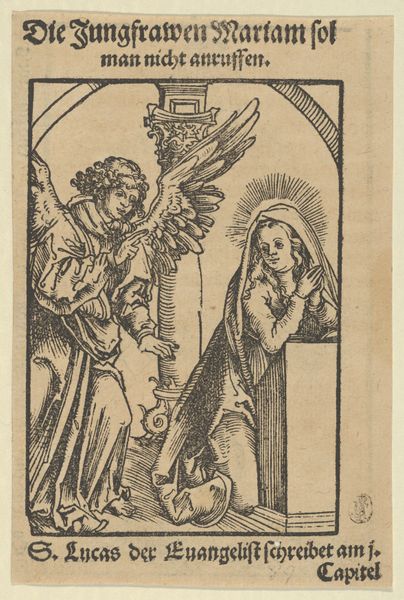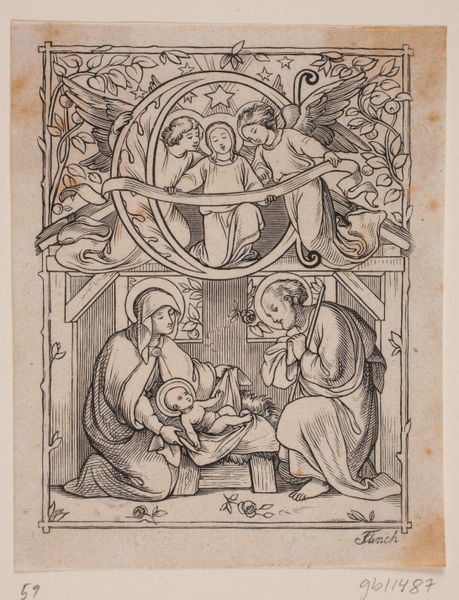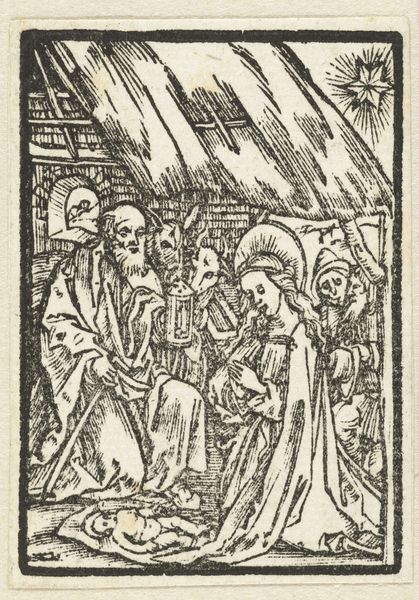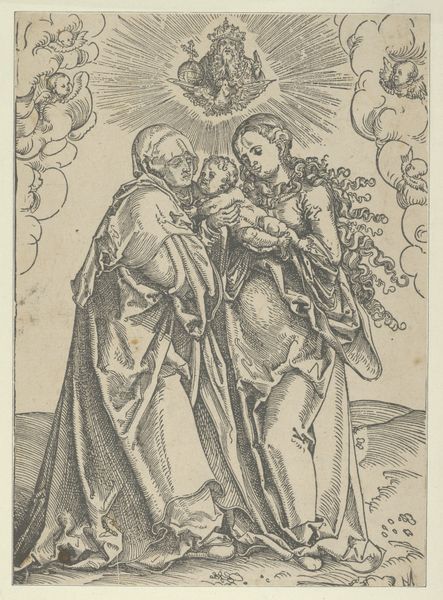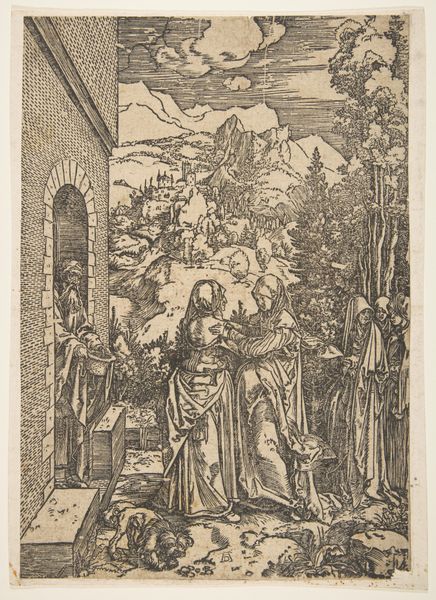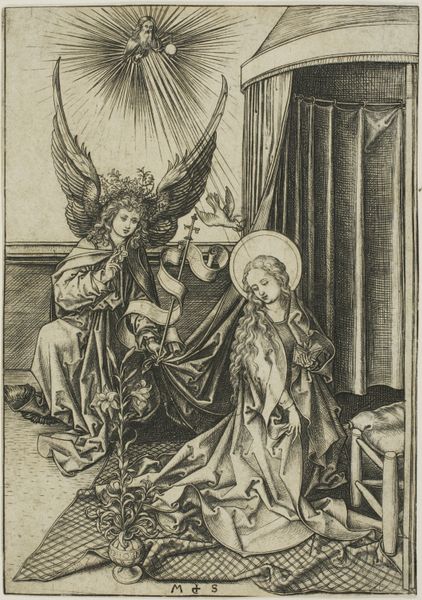
drawing, print, woodcut
#
drawing
#
pen drawing
# print
#
figuration
#
woodcut
#
history-painting
#
northern-renaissance
Dimensions: sheet: 2 3/8 x 1 5/8 in. (6.1 x 4.1 cm)
Copyright: Public Domain
Curator: Here we have Albrecht Dürer's woodcut, "The Nativity," created sometime between 1485 and 1528. What are your initial thoughts on it? Editor: Striking! There’s something intensely vulnerable and exposed about this scene. It makes me consider what nativity as such a foundational story tells us about societal expectations surrounding family. Curator: As a woodcut, we’re looking at a relief printmaking technique. A design is carved into a block of wood, and the remaining raised areas take the ink. You can see Dürer's skill in the fine lines creating depth and shadow. Think of the physical labor involved in achieving that level of detail! Editor: Precisely, it reflects a very specific worldview and set of power relations. Think about Dürer himself as a male artist shaping and framing a deeply human and even feminine scene. Where do women, as the original birthers, fit into that legacy? Curator: Dürer was, indeed, operating in a patriarchal society, as he actively elevated printmaking to a level considered to be a craft. And his choices—the angles of the roof, the rendering of Mary's robes—would be intentional visual choices influenced by patronage and the marketplace. Editor: Absolutely. The political context is vital. Nativity scenes often served to legitimize power structures, reinforce ideals of subservience, family, gender, piety. Do we have visual power dynamics between Mary and her child? Are the Three Kings figures of othering and subjugation? It is a history painting more than simply an unassuming devotional depiction. Curator: Good points. It is thought Dürer may have created it on laid paper, potentially manufactured in Italy at the time—and transported. Think of this woodcut not just as an object of devotion, but as a commodity traveling along complex trade networks. Editor: This discussion highlights how artwork like "The Nativity," are far more than devotional objects or aesthetic masterpieces. Curator: Indeed. Dürer’s mastery in woodcut technique gives the scene visual power. Editor: Yes, by reflecting on this context and the implications it carries, it invites to really question how art and belief have shaped, and continue to shape, the world we live in.
Comments
No comments
Be the first to comment and join the conversation on the ultimate creative platform.
